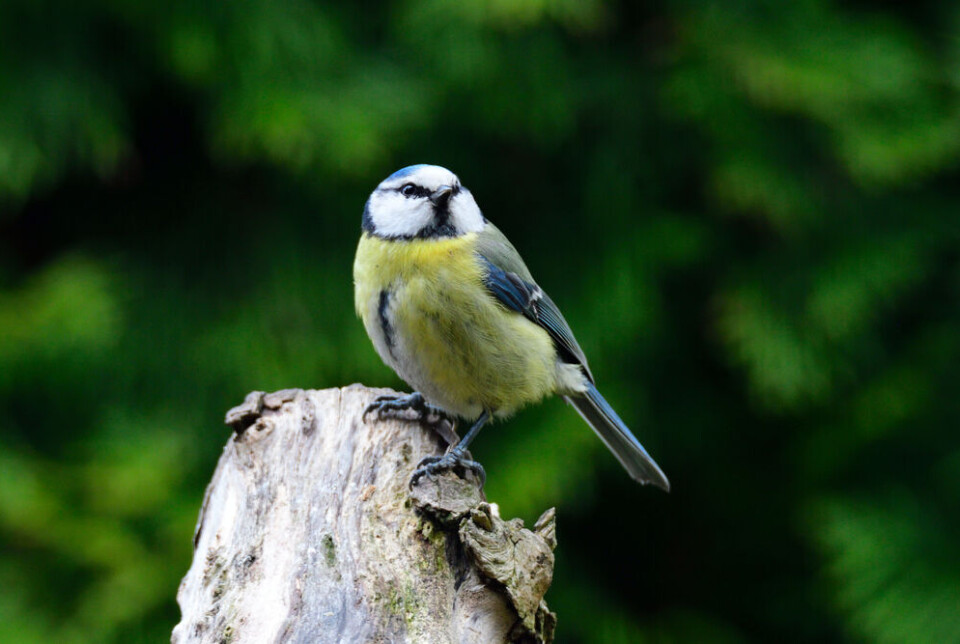-
White storks make strong return in France via nest ‘platforms’ and clipped wings
The Ligue pour la Protection des Oiseaux shares the conservation challenges in saving these birds from extinction
-
Efforts to reintroduce black vultures in France
Plus, wildlife spotter, Jonathan Kemp, shares his experience of searching for bearded vultures around his home in Aude
-
Let your lawn grow, water for birds: how to help wildlife in your French garden
‘It is acceptable to have untidy hedgerows,’ says biodiversity spokesperson.
Meet France's great garden acrobat
With its bright yellow and blue plumage, the Eurasian blue tit is easy to spot in the garden.

An acrobat with very little fear of human beings, it can be seen hanging upside down from even the most slender of twigs in order to find food.
They are quick learners, too. Back in the day of daily milk deliveries in the UK, they were notorious for pecking through foil milk bottle caps to drink the top of the milk.
Their instinct to strip bark from trees looking for insects means they also have a tendency to strip loose building materials away.
Despite being protected in France, meaning it is illegal to disturb them, destroy their nests, to shoot, trap, or net them, they are declining, mainly due to modern farming methods which often leave few trees standing for them to nest in.
They prefer deciduous or mixed woodland with lots of oak trees.
They usually build their nests (from moss, wool, hair and feathers) in tree holes, ivy or evergreens but readily take to nesting boxes in trees, and once a breeding pair have taken possession of a nesting site, they will return to it year after year. They are easy to spot climbing a tree trunk in short jerky hops.
Blue tits eat all sorts of pests including coccids and aphids, and feed their young up to 10 moth caterpillars a day, making them a valuable help in the garden. They also eat seeds, unsalted peanuts, black sunflower seeds, and suet.
You can prioritise them by putting birdfood out that only blue tits can access, ie half a coconut hanging upside down on a string.
You can also make a treat by filling half a coconut with suet melted and mixed with seeds and unsalted nuts.
Leave it to harden, and then hang it outside somewhere you can watch the blue tits’ antics from indoors.
























